Sharlyn J. Lauby's Blog, page 73
January 14, 2021
Start the New Year Betting On You and Your Career

I know that we can set and start goals at any point in time, but there’s something very exciting about doing it at the beginning of the New Year. Especially this year, when 2020 was a dumpster fire on many fronts. But setting and starting goals is hard. We often set too many and don’t prioritize them correctly. Ideally, we need unfiltered practical advice on how to be our best selves.
That’s why I’m delighted to tell you about the book “Betting on You: How to Put Yourself First and (Finally) Take Control of Your Career” by Laurie Ruettimann. She describes herself as a speaker, author, podcaster, and badass. I know her as the kind person who welcomed me into the HR blogging community and was willing to share her expertise. And I’m thrilled she agreed to this interview.
Laurie, before we start talking about your book, I’d like to check in with you. Are you and your family safe and well? How are you doing with everything going on right now?
[Ruettimann] Thanks for asking. Life is boring, which is perfect. My brother was diagnosed with colon cancer back in January 2020, but he is in remission. My family are wearing masks, washing our hands, and doing our part to make sure this pandemic comes to an end. Can’t come soon enough.
I know that I speak for everyone in saying it’s good to hear your brother is in remission. But to shift our conversation, there’s nothing boring about launching a book. LOL! To start our conversation, I want to talk about the title – Betting On You. It mentions “How to put yourself first”. I think a lot of people struggle with this because they feel putting yourself first translates into being self-absorbed. What would you say to those people?
[Ruettimann] The mind is a tricky thing. If you’re worried about being too self-absorbed, the irony is that you are thinking about yourself. Might as well focus on self-improvement and being of service. That’s what this book is all about.
One of the chapters I enjoyed was titled “Always be learning”. If there’s one skill that you’d recommend people focus on, what would it be? Why?
[Ruettimann] It’s trendy to tell people to develop curiosity, but I think that’s garbage. Curiosity is an attitude, not a skill. I think people need to learn better communication skills. The ability to write, think, and communicate complex ideas to multiple audiences pays off at every level in a career.
I also liked the chapter that mentioned premortems. Can you briefly tell readers what a premortem is and how they might use one to further their career?

[Ruettimann] I’m obsessed with the premortem. It’s an old stoic exercise to help you mitigate risk. You begin by thinking of something that will fail. Then set a timer for 60 seconds and write down all the ways it will fail. When the timer is up, you have a list of things to fix before you start your endeavor.
For example, if you’re worried that you’ll fail a test or blow a job interview, test that idea out. Set a timer, write down all the mistakes you will make, and then explore the list. Are those fears realistic? Will you screw up? If so, tackle those glitches before you begin. You will improve your chance of success by over 30%.
I’m the kind of person who occasionally likes to go back into books I’ve read and re-read a chapter or passage. It could be because I’m looking for inspiration or maybe a kick in the pants to do something. Is there one section of Betting On You that you would suggest bookmarking for regular reference?
[Ruettimann] I keep going back to Chapter 8 where I discuss quitting your job. There’s a line in the book from my friend, Jennifer McClure, who is a noted speaker and business coach. She said, “Everybody good gets fired once.”
I must quote that line once a week. If you’re a talented individual with big ideas, you’re bound to irritate someone during your career. Truly great people will analyze what happened, learn from it, and kick butt in their next job.
Last question. What’s one business trend you’re seeing that professionals need to pay attention to (it can be related to the book or not)?
[Ruettimann] Companies are trying to solve for burnout with wasteful and hokey programs and initiatives. Burnout is a sign of mistrust. Employees who trust their leaders aren’t afraid to take time off, step away from the laptop, or take care of their wellbeing. There’s no formal program that fixes broken relationships between workers and managers. If your workforce is exhausted, it’s time to call in an external expert—a human resources consultant or even an organizational psychologist—to do a root cause analysis and speak truth to power.
A huge thanks to Laurie for sharing her knowledge and giving us a little sneak peek into her new book, which is available on Amazon. Also be sure to check out her podcast – The Punk Rock HR Show – where Laurie chats with professionals from all walks of life about work.
My big takeaway from Laurie’s book “Betting on You” is that the key to success lies in being yourself. Sometimes that means doing the unpopular thing. Sometimes it means you’re going to fail first and succeed later. “Betting on You” is the book you want to have on your bookshelf or on the corner of your desk to remind yourself that you’re not alone. We all need that encouragement.
The post Start the New Year Betting On You and Your Career appeared first on hr bartender.






January 12, 2021
Select the Best Candidate Faster: Employment Background Checks

(Editor’s note: Today’s post is brought to you by our friends at Paycom , a leading provider of cloud-based human capital management software. For the eighth consecutive year, Congratulations! Hope you enjoy the article.)
One of the things that’s amazing to me about the hiring process is that organizations will spend hours screening, interviewing and discussing candidates, but when it comes time to make a final decision, they rush it. And I can’t help but feel that when organizations rush their final decision, they might not make the best candidate selection.
Granted, I’m not suggesting organizations take extra weeks or months, but it does make sense to have a selection process in place to ensure the organization extends an offer to the best candidate and the process works effectively and efficiently. We’re well aware that high performers and high-potential candidates can land a new opportunity in just a few weeks.
One of the steps in the hiring process organizations should take a look at is employment background checks. According to HR.com’s Research Institute and the Professional Background Screening Association (PBSA), 66% of organizations say the length of time to get results is the most significant challenge of background screenings.
Background checks help the organization, employees, customers and vendors. However, for them to be valuable, organizations need results quickly. In an article from the Society for Human Resource Management (SHRM), the average time to complete a basic background check is 24-72 hours. It can be longer if there are some complexities that need to be researched. If the best talent can find new opportunities quickly, then organizations need to be in a position to conduct activities — like employment background checks — quickly.
Employment Screening OptionsMany organizations utilize employment background checks, and for good reasons. This is a process that a company uses to verify that a candidate is who they say they are. Typically, organizations conduct background checks to make sure a candidate aligns with the responsibilities required for a role. To accomplish this, there are several different types of background checks a person may use.
There’s also a potential risk to organizations that choose not to conduct employment background checks. A.J. Griffin, director of government and community affairs at Paycom, shared the financial impact of not verifying an employee’s background: “A recent survey from HR.com found that 95% of employers used at least one type of background screening during the hiring process, and safety was cited as the primary reason for conducting these checks. The wrong hire could expose your organization to costs in the form of legal fees, damages and the loss of business that such an employee can create.”
On some level, you probably already know what I’ve shared with you so far. Many organizations conduct background checks. And they take too long to process. As a human resources professional, one of the things I would love to see is the employment background check process integrate with my talent acquisition software. Well, guess what. Paycom has done that.
As part of their talent acquisition software, Paycom offers employment screening and background checks in the public records, verification services, identity verification and credit checks, and drug and health screening. Some examples of those services include:
Criminal background checks at a federal, state, and county level. Organizations have many reasons for conducting criminal background checks, including protecting employees, customers and vendors. Also, certain industries have criminal background check requirements, including health care, finance, government and education.
Credit checks are often conducted in addition to a criminal background check, especially for positions that handle money and credit card information. One of administrative components of credit background checks is making sure that the organization follows the Fair Credit Reporting Act (FCRA) requirements in terms of candidate notifications. A nice feature with Paycom is that they take care of the FCRA administration for you.
Education verification is fairly common in the academic world, but according to Griffin, all industries can benefit from an education check. “The consequences of college degree fraud can range from potential damage to an organization’s reputation to exposure to litigation. SHRM estimates the cost of hiring a single employee is $4,425, a substantial sum that should be directed toward candidates that you know will benefit your organization.”
Employment verification isn’t the same as reference checking. For example, an employment verification might be done if an organization needs to verify dates of employment for employees to obtain a security badge. We did this when I worked at an airline. While getting information about an employee’s performance was valuable, we simply needed to verify dates of employment.
Drug testing might be required in some industries, but for many organizations, conducting drug testing allows them to get a discount and/or favorable rates on their workers’ compensation coverage. Many organizations also have drug free workplace policies that a consistent drug testing program can help reinforce. One of the helpful features with Paycom is that the candidate’s information is auto-populated into the drug-testing chain of custody forms.
So far, we’ve talked about employment screening and background checks in the context of talent acquisition. But sometimes it’s necessary to use background screening with current employees. For example, an organization might have to do a drug test for cause or a credit background check for an employee transferring to a new role where cash handling is a significant part of the job.

I asked Paycom about situations where current employees might be subject to a criminal, credit or education background check, and Griffin reminded me that state and local laws might dictate background check requirements: “Depending on the state and local laws related to drug testing, organizations may have a recurring screening policy, while others may simply feel a background check for an employee is necessary. It’s important to remember that laws will vary across states and local municipalities. Our tool gives employers the ability to conduct recurring background checks in compliance with local and state laws on current employees at any time, making it easy to ensure you have the best people representing your organization.”
Reduce the Time It Takes to Conduct Background ChecksPaycom’s Enhanced Background Checks tool helps employers verify a candidate’s background to ensure they’re qualified for the job. As Griffin mentioned, safety and security are top issues right now. We don’t talk about it much, but conducting employment background checks can also give candidates some comfort knowing the company to which they’re applying takes safety and security seriously.
If you want to learn more about employment background checks and the compliance forecast for 2021, sign up for this HR.com webinar on Tuesday, Jan. 19 at 2 p.m. Eastern. A.J. Griffin and the Paycom team will be sharing their thoughts on what employers can expect. If you already have something on your calendar for that time, sign up anyway and listen on-demand. The session has been preapproved for recertification credit by the HR Certification Institute (HRCI) and WorldatWork.
Now is a perfect time to start looking at processes, like employment background checks, to make sure they meet the organization’s needs. I expect 2021 to be the year in which organizations are focused on the next normal and hiring will definitely be in the spotlight.
The post Select the Best Candidate Faster: Employment Background Checks appeared first on hr bartender.






January 10, 2021
What Can HR Expect in 2021: Next Gen Management

Next gen is a common term used to describe a product upgrade, often in technology. It’s been picked up by other industries to mean “better than before”. One of the reasons I like the term is because it doesn’t imply that the past was bad.
For example, in the context of management, no one is saying that managers are currently doing a bad job. Your organization has performance standards for managers and holds them accountable for meeting that standard. However, last year introduced some new ways to approach work and as such, managers are going to have to adapt accordingly.
If you’re looking for some creative inspiration to share with your managers, these articles could be helpful. I’ll be honest, they might not be new and revolutionary, but they’re great reminders about the things that managers should be doing. It’s so easy to get distracted, we need these gentle reminders.
3 Ways to Create a More Human Workplace
A human workplace is where employees feel empowered, understand their purpose, and are excited about their future with the organization. I like to think about these three drivers – purpose, autonomy, and engagement – like a three-legged stool. We need all of them to create a more human workplace. And we want them in a certain level of balance. Regardless of what’s happening in the business world, organizations need the best talent to meet their goals. That not only means hiring the best but keeping them.
Servant Leadership: Excellent Leaders are Good Followers
Servant Leadership states that excellent leaders serve those who follow them. If you’re not familiar with the concept of servant leadership, it was started in the 1970’s by Robert Greenleaf, director of management research at AT&T. Greenleaf’s job was to study how the best leaders emerged in organizations. During the same time, Greenleaf was personally troubled by the student unrest on college and university campuses. So, Greenleaf decided the best way to understand the youth movement was to read “Journey to the East” by Hermann Hesse, a novel that was very popular with youth at the time.
Managers: 8 Ways to Create an Engaging Day for Employees
Organizations continue to look for ways to create greater employee engagement. Of course, one of the ways they do it is by creating programs focused on improving engagement. But creating programs can’t be the only thing that organizations do. Managers need to be actively involved in creating engagement. This is a nice list of things that we can remember to do when interacting with employees. Will we remember to do every single one on each and every day? Probably not. But maybe that’s not the point. My question is, how many managers are doing at least one with an employee every day? Or maybe managers are great at using an employee’s strengths but not so great at creating collaborative opportunities. The goal for management is with every interaction to provide employees with an engaging experience.
Managers: How to Support Remote Employees
Some people might feel that working from home can negatively impact company culture and promote employee disengagement. I won’t lie – it might if the organization doesn’t make real effort to engage with employees. But in many cases, a remote work arrangement is an opportunity. The goal (and the challenge) is to be there enough that employees know you’re supporting them but not so much that all of the activities get in the way of the work. It’s a delicate balance for sure. Asking employees what they need – and they might not know right away – will help start the conversation.
Workplace Power: The 7 Types and Why You Need Them
Please don’t be modest and think to yourself . . . I don’t have any power. We all have workplace power. Some have more than others. There are lots of different ways power can manifest itself. And for that reason, it’s important to realize that power exists in everyone, not just management. It’s also possible that you have different kinds of power with different groups or situations. The two biggest mistakes I see with people using power revolve around trying to use power they don’t have and using the wrong kind of power to achieve specific results.
Managers: You Can Give Bad News to Employees with Respect
Unfortunately, regardless of where your organization is during this time, it doesn’t make you immune to having to deliver bad news. This could be a real struggle for organizations and managers that have never really had to deliver bad news before. Or they haven’t had to deliver bad news in quite some time. But it is possible to deliver bad/sad news in a way that’s respectful to employees. The way to do it is by keeping the basic tenets of the employee experience in mind.
While organizations will expect a lot from their management team this year, it’s important to remember that managers have their own set of challenges that they’re working through right now. They’re helping employees stay safe in the workplace, get accustomed to remote work, juggle work productivity and home life, be a remote caregiver – as well as figuring all of this out for themselves. Organizations that want managers to deliver an excellent employee experience to a hybrid workforce need to give managers the support and tools to make it happen.
COMING SOON
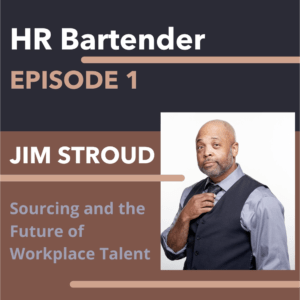
The post What Can HR Expect in 2021: Next Gen Management appeared first on hr bartender.






January 5, 2021
3 Areas to Include In an HR Compliance Self Audit
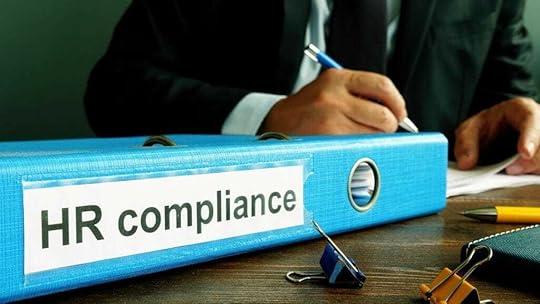
(Editor’s Note: Today’s article is brought to you by our friends at Poster Guard® Compliance Protection , a division of HRdirect and the leading labor law poster service that gets your business up to date with all required federal, state and local labor law postings, and then keeps it that way — for an entire year. Enjoy the article!)
One of the things that always makes me feel wonderful is to start the New Year with my office in order. Meaning that I’m organized, in both my personal and professional life. I know that might sound impossible under today’s circumstances, but I do believe there are some things we can do to start the year off right. For example, in my personal life, it involves selecting and starting to organize my planner. I also try to set a couple of goals like scheduling a time to update my social media accounts and organizing tax records.
On the professional side, this was always the time of year where we wanted to make sure our offices were in compliance. We did that by conducting an HR self-audit to make sure that we were compliant. We would share the results with senior management and if we noticed something out of order, we were in a position to immediately take care of it.
Conducting a self-audit can be valuable, especially during a year like this one where there has been a major election. There could be upcoming changes with the new administration and it’s important to know where we stand. According to Ashley Kaplan, Esquire, senior employment law attorney for ComplyRight, 2021 is expected to be a record year of labor law poster changes. “There are hundreds of state and local laws pending that could impact posting requirements for 2021. Changes are also expected on a federal level that would likely impact the federal posters and federal contractor posters (e.g. expanded equal employment opportunity (EEO), family and medical leave provisions, and/or minimum wage increase). By knowing where we are, this prepares us for what might be coming in the future.
A quick side note: If you’re looking for a legal webinar on what 2021 might hold for businesses, Poster Guard recently hosted one titled “What’s Next? Major Labor Law Trends Likely to Impact Your Workplace in 2021”. You can listen on-demand.
Back to the self-audit. I think we can all agree that 2021 is going to be a busy year. As such, I can see a lot of organizations wanting to start the year focused and ready. This includes the HR department. HR will want to know that compliance matters are in order so they can spend the majority of their time on recruiting, training, and helping the organization accomplish its business goals.
Speaking of HR department’s time, I understand they don’t have a lot of it. So, self-audits cannot become a massive drain of resources. If you’re looking for a place to start, here are three areas to consider in an HR self-audit.
Workplace Safety. While there is positive news about a vaccine, we can’t ignore the fact that we’re still dealing with COVID-19. Organizations are receiving federal recommendations, state guidelines, and local suggestions. That’s not going to change in the near future. Organizations have to safely manage a hybrid workforce.
Remote workers. Speaking of the hybrid workforce, I’m hearing many organizations talking about extending remote work arrangements with employees. Not only do organizations have to think about making sure remote workers have the equipment and tools to be successful, but that they are being regularly informed of their employment rights.
Recruiting and onboarding. With the start of the New Year, it’s possible that organizations have budgeted for new positions. Applicants and candidates need to be informed of their rights, even when we’re conducting parts of the hiring process online. In addition, when we’re welcoming new hires, we have to tell them about their rights. Often that takes the form of labor law posters, but don’t forget mandatory employee handouts.
I know you’ll agree with me that all of these areas are important. You might be saying to yourself, “I don’t have time to research labor law postings and handouts.” And I agree this isn’t the best use of HR time.
Fortunately, HR departments don’t have to do this alone. HR can partner with companies like HRdirect. Their Poster Guard Compliance Protection service monitors legislation at a federal, state, and local level. For a full year from date of purchase, they will replace labor law posters whenever a mandatory change occurs.

It’s a great time saver. Especially when we have so many other things that we need to be working on like making sure that employees have the tools they need to be successful. If you want to learn more about Poster Guard Compliance Protection service, check out their website. HR Bartender readers receive a special $30 discount off Poster Guard Compliance Protection including FREE ground delivery right now using the code SC32767.
As we’re starting 2021, conducting an audit is a helpful way to check the status on your compliance. Because compliance activities like labor law posters don’t follow a set schedule. It’s not like “every January labor law posters change”. Organizations should have a compliance partner that takes care of the details, so HR can focus their energy on the business.
The post 3 Areas to Include In an HR Compliance Self Audit appeared first on hr bartender.






December 28, 2020
What to Expect in 2021: Analytics Driven Talent Strategies

While there are many things we do not know about 2021, one thing we do know is that organizations will be focused on getting to what we might want to call the “next normal”. I’m sure there are companies that feel they fell behind in 2020 and they will want to make that up.
A key element to doing that successfully is people. Organizations will need to hire the best talent to help them accomplish their goals. And HR’s role in this strategy will be essential. Over the year, we’ve published a few articles about HR’s value in aligning talent management with the business. I thought this might be a good time to revisit them, especially the ones on business acumen and people analytics.
The Future of Talent Management
As companies look at their goals for the next 12-18 months, they will want to have the right talent in place. That means having the right talent management strategy. We need conversations right now about talent strategies, goals and management. None of this is going to happen overnight, but it does need to start.
Organizations are Focused on Using People Analytics as a Competitive Advantage
Strategic HR is focused on people analytics as systems data is a part of business analysis. HR helps the organization hire the talent and they are a significant part of creating and maintaining culture. They assist in the development of processes and guidelines. And HR systems data is regularly used in analysis. HR departments will be asked to participate in key decisions during their organization’s reopening and recovery. Be prepared to participate.
People Analytics: How to Solve Business Problems
Every business has problems they want to solve. It could be a small problem or a large one.
People analytics can help HR solve business problems. The power of technology is effective in using data for recruiting and retention. This is definitely one of those moments when we can put the power of technology to excellent use.
5 Ways Strategic HR Can Bring Business Value
HR’s strategic role is to help the organization solve their talent challenges. Because when we do, that benefits the bottom line. The first rule of solving business problems is to get buy-in. Not only from senior management but from employees. For example, we’ve been talking about using technology to improve the employee experience (and reduce turnover).
3 Ways HR Pros Can Use People Analytics to Help the Bottom Line
People analytics is about using the data and our reasoning abilities to make business and talent decisions. It’s about asking a lot of questions. What is the organization currently doing? What does the organization want to accomplish? And finally, how do we get from the current state to the desired state? Organizations can use people analytics and data to drive business success.
6 Ways to Improve Your Business Acumen in 2020
Over time, I’ve come to realize that business acumen isn’t something you learn once and you’re done. Business acumen is changing all the time. It’s about more than just knowing industry jargon. Yes, it’s true that terms like profit and EBDITA haven’t changed. We have new terms like blockchain, disruption, and light-bulb moment. If you want to be a true business partner and contributor to the business, then you have to know how to really talk the game.
4 Change Management Strategies for Managing HR Digital Transformation
Digital transformation is focused on creating a new way of business. It’s about giving employees answers and empowering them to make good decisions. Technology is able to crunch the numbers, do it quickly, and free up organizations, giving them the time they need to make business decisions. Organizations have to put a solid change management process in place to make the transformation successful.
Organizations are very focused on economic recovery. That’s a good thing. It means companies will be looking to hire employees. For HR departments, this means revisiting the talent management strategy to ensure that the organization can attract, engage, and retain the talent it needs to accomplish its business goals.
Image captured by Sharlyn Lauby while exploring the streets of Las Vegas, NV
The post What to Expect in 2021: Analytics Driven Talent Strategies appeared first on hr bartender.






December 22, 2020
Thank You and Happy 2021!

Thank you for being an HR Bartender reader and for sharing HR Bartender with your networks. I can’t begin to tell you how appreciative we are for your support.
Thank you to all the people who send questions and comments. I wish that I could answer them all! I’m honored that you have confidence in my ability to respond and hope I don’t disappoint. And many thanks to the lawyers, consultants, and business professionals who share their knowledge and experience to answer to your questions. Your generosity is amazing.
Last but certainly not least, I’d like to thank the companies that sponsor and advertise on HR Bartender. It’s beyond wonderful to work with you and learn about your products and services. Your partnership is valued by me and this community.
Mr. Bartender and I look forward to 2021 and hope your holidays are filled with love.
Please stay safe. Cheers!

The post Thank You and Happy 2021! appeared first on hr bartender.






December 20, 2020
5 Professional Development Resources for HR Pros – Ask #HR Bartender
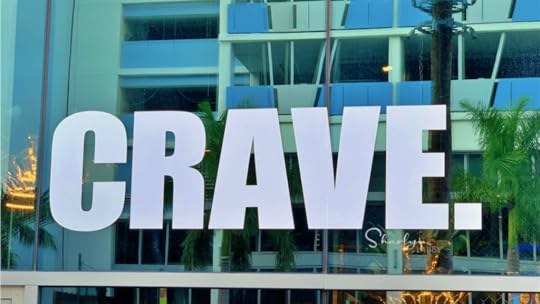
I recently received a question from a reader asking about professional development resources for HR professionals.
Hello Sharlyn. I read an article called “ How to get an entry-level job in HR ” that had a few quotes from you. I’m switching careers to HR and looking to go to back to school in the fall and I’m trying to find a good place to start educating myself.
I want to begin reading books about HR but there is so much out there which makes it a little daunting on where to start. I was wondering if you had any recommendations.
I get it. There are lots of resources available for human resources. That’s a good thing. But where to start can be daunting and expensive. Here are five resources that I would suggest to a fellow HR pro and the first two are FREE!
How to Get Your First Job in Human Resources
My start in human resources wasn’t through the normal career path. After an auto accident left me physically unable to do my job, the company I worked for transferred me into human resources. And they provided me with training to be successful. So, I certainly wouldn’t recommend that anyone go through the professional development that I did to get into HR.
In this article, I talk with Steve Browne, SHRM-SCP. He’s currently vice president of human resources for LaRosa’s, Inc., a regional pizzeria restaurant chain based in Ohio. And he’s on the board of directors for the Society for Human Resource Management (SHRM). I’ve had the pleasure of knowing Steve for years and I can attest to him being one of the most dedicated people in the HR profession.
6 Ways to Improve Your Business Acumen
This shouldn’t be a surprise to anyone, but business acumen is one of the behavioral competencies in the Society for Human Resource Management (SHRM) competency model. It’s important to know the business, be able to talk about it, and make decisions to help the business grow.
But honestly, it can be challenging to develop business acumen. Oh sure, a lot of people throw business buzzwords around like “customer journey” and “wheelhouse” but do they really know everything those terms mean? In today’s business world, new concepts are being developed all the time. It’s a challenge to stay on top, especially when your plate is already full of work.
In this article, I list my favorite activities for building business acumen.
The 9 Faces of HR – Which One Are You
In my very first blog post on HR Bartender, I talk about how our actions speaks louder than words. And all these years later, that old cliché still rings true. As HR professionals, we need to figure out what we want to be known for and demonstrate it with our actions. The good news is we don’t have to figure it out all on our own.
Kris Dunn, author of the HR Capitalist, has written a book titled “The 9 Faces of HR: A Disruptor’s Guide to Mastering Innovation and Driving Real Change”. The book does a deep dive into career development for human resources professionals. This is a topic that I don’t believe HR pros spend a lot of time doing because we’re so busy taking care of everyone else in the company.
A Manager’s Guide to Developing Competencies in HR Staff
Workplace leaders are challenged with not just having people who can do the job today, but who are prepared to step up when things change tomorrow. The Guide provides an easy-to-use roadmap for HR managers and small business executives to develop employee proficiency in the core HR competencies. Loaded with tips, techniques, assessments tools, and real-life stories of management successes, it takes the mystery out of HR staff development by showing the value of the SHRM competencies in business and then clearly establishing the links between various competencies and HR functions.
I regularly recommend Phyllis’ book to HR colleagues because it’s filled with practical job aids.
It also offers activities HR managers can use to develop their own competencies and features proficiency indicators for different levels of HR staff and charts and forms to help make the process of developing HR staff a little easier.
How to Develop a Plan for Self-Directed Learning
A couple of years ago, I wrote about Debra Cohen’s book “Developing Proficiency in HR: 7 Self-Directed Activities for HR Professionals”. In it, she talks about professional development using a “career portfolio”. I like to think of career portfolios as something similar to a graphic artist’s portfolio. It’s a place – either physical or digital – where someone can keep their career-related accomplishments. The portfolio can remind us of our learning accomplishments especially when we’re having conversations with our manager about goals, career aspirations, etc.
Cohen has a new book out titled, “Developing Management Proficiency: A Self Directed Learning Approach”. Personally, I can’t think of a better time to be talking about self-directed learning. It’s always been important but given the level of remote work we’re experiencing, even more so now. Employees have to find ways to continue learning and keep their skills relevant.
Even if you’re not planning to go back to school and earn a degree in human resources, I hope you’ll find these articles and resources helpful. As human resources professionals, we need to create plans for our own professional development. It’s not only good for us but for the organizations we work with.
Image captured by Sharlyn Lauby while exploring the streets of Tampa, FL
The post 5 Professional Development Resources for HR Pros – Ask #HR Bartender appeared first on hr bartender.






December 17, 2020
A Fake Commute Might Be Helpful if People Actually Do It
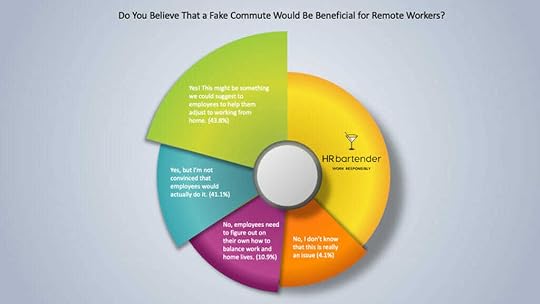
A few weeks ago, I wrote an article about whether you should add a “fake commute” to your daily routine. A fake commute is an activity that we do at the beginning and end of our workday to draw separation between our work and home lives. The way a commute does when we work in an office environment. In the article, I asked you what you thought of the fake commute idea. You can see what you said in our graph above.
My big takeaway from the results is that a fake commute might be helpful if people actually did it. And honestly, that’s a huge issue with remote work in general.
One of the biggest advantages to remote work is the flexibility. That being said, remote work requires discipline and time management. The key is being able to do both at the same time.
FLEXIBILITY. Remote workers have the ability to respond to last-minute requests or deal with the unexpected. It’s a huge benefit. As someone who works from home, it’s been helpful to be able to put my work on hold to run out to get emergency supplies when a hurricane is coming. Or if I don’t feel great, I can take a nap and work later in the day. Flexibility could make it very easy to build a fake commute into our workday. Maybe we walk around the neighborhood in the morning and do The New York Times crossword puzzle in the afternoon. We can do whatever makes us feel good.
DISCIPLINE. While it may be easy to build a fake commute into our workday, it can be hard to actually do it. We might get distracted doomscrolling the latest news. Or the weather might be cruddy, and we simply don’t want to take that walk outside. I’m sure we all realize that to get the benefit of a fake commute, we need to do it. It reminds me of the Seinfeld writing method. Just do it every day. It doesn’t have to be perfect. But every day we do it will make it more a part of our routine.
TIME MANAGEMENT. Even when we have a tremendous amount of flexibility, we still have deadlines that we need to meet. If by chance, one of those deadlines interferes with our fake commute, that’s okay. Just do it the next day. But make sure you really do it (see the paragraph on discipline above). Or, on those days when you can’t do a fake commute, come up with a Plan B. Maybe it’s a short meditation during lunch. It’s possible that the Plan B activity will be a refreshing change of pace that accomplishes the same goal as a fake commute.
I wouldn’t let these poll results deter anyone from adopting a fake commute or suggesting it to others. Keep in mind that the benefits happen when it becomes a part of your routine. Think about how you would hold yourself accountable for doing it each day. And organizations might want to think about how they can help and support employees who are trying to develop new habits.
The post A Fake Commute Might Be Helpful if People Actually Do It appeared first on hr bartender.






December 15, 2020
4 Workplace Guarantees Every Employee Should Have

(Editor’s Note: Today’s article is brought to you by our friends at Workhuman® [formerly known as Globoforce]. They help organizations energize their cultures and unlock employees’ passion and potential with the fastest-growing social recognition and continuous performance management platform. Enjoy the article!)
Regular readers of this blog know that I sometimes facilitate a SHRM seminar on talent acquisition. In it, we talk about employment branding and how part of developing the organization’s employment brand happens by creating an employee value proposition (EVP).
The EVP is what organizations provide to workplace employees in exchange for the work that they do. It includes the things you would expect like compensation, benefits, company culture, training and development, etc. But in thinking about those things, it occurred to me that they’re very fluid. What I mean by that is that they can easily change based on the company or industry.
For example, when I worked in the hospitality industry, I didn’t always make the highest salary. And I worked long hours. But in exchange for that, I got some fun perks like free meals, dry cleaning, and spa time. In a different industry, I might make more in salary, but then I’d have to pay retail for all of the things I got free in hospitality.
I’m not complaining. And what I’ve described isn’t necessarily a bad thing, but wouldn’t it be great if, when it came to certain aspects of employment and the employee experience, there were guarantees? Things that every organization said, “Yes, we will support that.” Those guarantees would be focused on giving every employee a more human work experience.
I could see candidates and employees loving this. Candidates would know that when they accept a job offer, there are things about their new employer that they don’t have to worry about. Frankly, I could see workplace senior management and HR leadership loving this idea as well. They don’t have to spend hours in conference rooms trying to figure out the perfect employee experience. It’s something that they have already agreed to do.
The Workhuman Charter of Workplace Rights
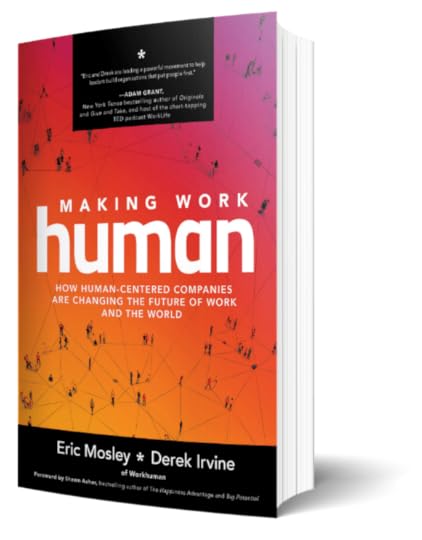
In the book “Making Work Human: How Human-Centered Companies are Changing the Future of Work and the World”, authors Eric Mosley and Derek Irvine did just that. They came up with that list of things (aka guarantees) that every organization should do to make work more human. To take it one step further, they’re proposing that the list can be viewed as a charter of workplace rights.
Think of these guarantees as something that every employee can rely on. It doesn’t matter what the employee’s job title is, or what size company they work for, or where the business is located, or even what industry we’re talking about. This is the baseline for the employee experience. The Workhuman Charter of Workplace Rights outlines a place where:
Environmental, social, and economic sustainability is supported.
People feel secure to express their views and ideas, with respect for themselves and others.
Individuals can use their talents and voice for good.
Employees deserve to grow to their greatest potential through training, feedback, and rewards.
Some of you might be saying, “The Charter seems very reasonable and logical.” And it’s true. That’s what makes it so great. No organization really wants to say:
“No, we don’t want to our employees to learn and grow.”
“No, we really don’t want people to do good things.
“Nah, we’re not really into listening to what others have to say.
And finally, “We’re not really into supporting our community or world.”
It simply doesn’t make good business sense to say or do those things. But what makes the Charter so impactful is that the Rights mentioned above are backed by science. They aren’t something simply made up. No offense to the creative people out there, but there are moments when we need the data and science. Organizations can save their creativity and innovation for how to implement the Charter. (Note to self: More on that in a future article.)
Organizations: Tell the World You’re Serious about Employees
Many organizations highlight that their employees are their business. They say that their talent is what sets them apart from their competition. Then now is the time to commit to a Charter of Workplace Rights that tells the world that the company is serious about it. I can’t think of a more perfect time for organizations to adopt a Charter like the one mentioned in “Making Work Human”.
Some organizations might say to themselves, “We’ll just implement our own charter.” And honestly, that’s certainly an option. But is that really how you want to be spending your time right now? Many organizations are looking to next year as an opportunity to recover from the pandemic. They know as part of that effort they need to redefine their workplace.
“Making Work Human” is the guidebook that can help the organization refocus on those guarantees that every employee should have. You don’t have to do it alone. Mosley and Irvine have started the project for you. They gathered all the data. You can pick up a copy of “Making Work Human” on Amazon. It’s a great read and an ideal blueprint for the employee experience.
The post 4 Workplace Guarantees Every Employee Should Have appeared first on hr bartender.






December 13, 2020
Coming Soon: The HR Bartender Show
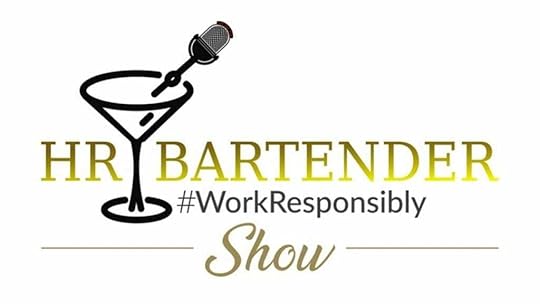
I have some very exciting news today. Well, at least I think it’s very exciting. LOL!
We’re launching a podcast – The HR Bartender Show.
We know that people like to consume information many different ways. Some want to read, while others want to listen. And sometimes we want to do both. Personally, I like reading as well as listening to content.
We hope to launch the show at the start of the new year. Before we do, I wanted to share some of the things you can expect from the podcast.
No separate podcast name. We toyed around with the idea of naming the show something different, but people recognize the name HR Bartender so we’re just gonna stick with it. You will be able to find recordings here on the blog as well as where you listen to your favorite podcasts – – like Spotify, iTunes, Stitcher, and Google Podcasts.
This will not be a weekly podcast. Think of The HR Bartender Show like your favorite television series. For our first year, we will have six episodes. I hope you’ll listen in for our pilot season and afterward, you’ll still have time to enjoy your other favorite shows. Maybe next season we’ll increase the number of episodes, but I honestly can’t imagine doing more than 10-12/annually.
We’ll release the whole season at one time. Mr. Bartender and I like the Netflix’s series “Dead to Me”. One of the things we enjoy is that they drop the full season at one time. We think it might be fun to do the same thing. That way you can listen at your convenience. Wanna binge listen to the entire season on a road trip? You can do that. Or you can listen to an episode each day.
Each podcast will have one takeaway. One of the regular pieces of feedback that I receive about HR Bartender (the blog) is that we focus on one takeaway at a time. We will do the same with each episode of The HR Bartender Show.
Each podcast will be short. Ideally, I’m thinking less than 30 minutes. I will admit that when I’m listening to podcasts, I find after 30ish minutes that I start multitasking and my guess is some of you may do that too. The last thing we want to do is waste your time.
Each podcast will be transcribed. I like listening to podcasts but when I want to refer to something that I heard in a podcast, I don’t want to relisten for the information and then have to transcribe it myself. We’ll do that for you. So, each episode will have show notes and be transcribed.
Oh! And I have one more exciting announcement. I’m thrilled to announce that our friends at Ultimate Kronos Group (UKG) will be the founding sponsor for The HR Bartender Show. UKG is focused on helping organizations develop people-centered operations that will yield long-term business results. We look forward to partnering with them on this podcast.

Thank you so much for being a regular reader of HR Bartender. We hope you will enjoy listening to The HR Bartender Show as well. We’ve spent some time over the past couple of months recording great conversations and we really look forward to sharing them with you in The HR Bartender Show.
The post Coming Soon: The HR Bartender Show appeared first on hr bartender.






Sharlyn J. Lauby's Blog
- Sharlyn J. Lauby's profile
- 10 followers



